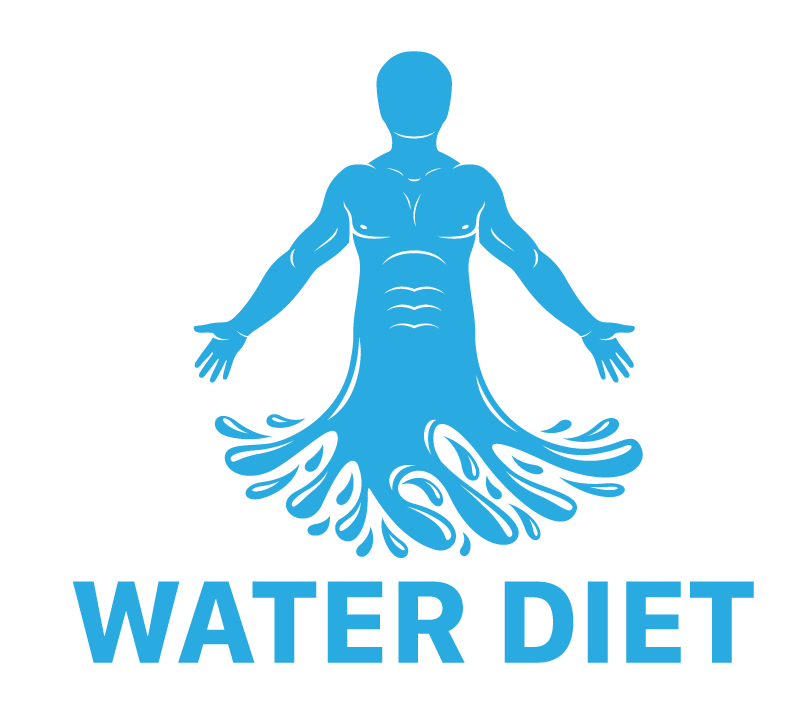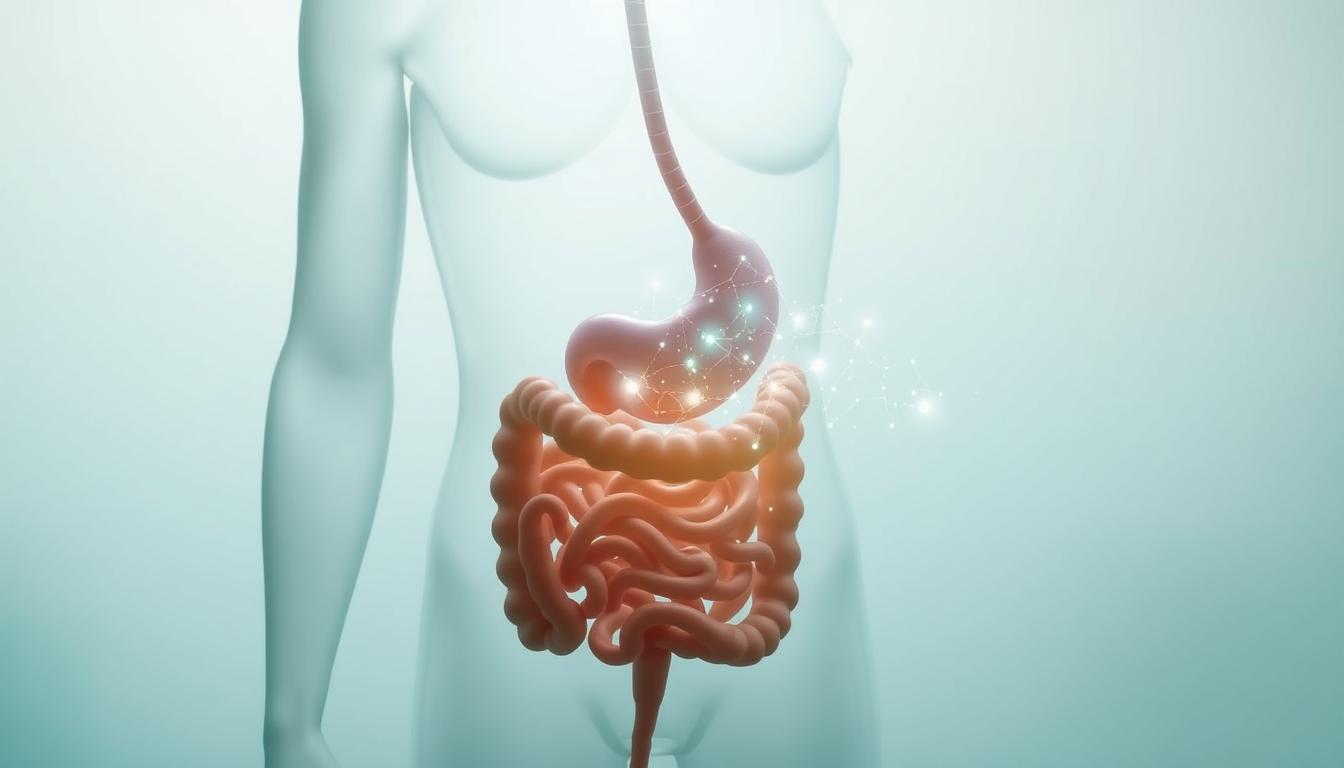The water diet is a simple yet effective way to lose weight and improve wellness. It focuses on drinking plenty of water and using hydration strategies. This guide will give you all the tips and tricks you need to follow a water diet and reach your weight loss goals.
Water fasting is a big part of the water diet. It means drinking only water for a certain time, like 24 hours to several days. This method has many benefits, such as cleaning out cells, reducing inflammation, and improving heart health. If you’re new, start with a short fast of 1-3 days to see the benefits.
A good water diet also includes ways to stay hydrated all day. Men should drink about 13 cups of water daily, and women should aim for 9 cups. Drinking more water and less high-calorie drinks helps with weight loss and health. For personalized advice on a water diet, contact our experts at WaterDiet.com.
Key Takeaways
- The water diet focuses on healthy water intake and hydration strategies for weight loss and wellness.
- Water fasting involves consuming only water for a set period, typically 1-3 days for beginners.
- Benefits of water fasting include autophagy, reduced inflammation, and improved heart health.
- Men should aim for 13 cups of water daily, while women should strive for 9 cups.
- Prioritizing water intake over high-calorie beverages supports weight loss efforts and overall health.
What is a Water Diet?
A water diet, also known as water fasting, means drinking only water for a few days. People don’t eat or drink anything else during this time. They do this for many reasons, like losing weight, feeling healthier, or getting ready for a medical test.
How Water Fasting Works
Starting a water fast changes your body in many ways. At first, your body uses up its easy-to-get carbs. Then, it starts to burn fat for energy, entering a state called ketosis. This makes ketones, which your body uses instead of glucose.
As the fast goes on, your body starts a natural cleaning process called autophagy. This is when your cells get rid of old or damaged parts and make new, healthy ones. This helps your cells stay young and strong, which can help prevent diseases and make you feel better overall.
The Stages of Water Fasting
Water fasting has different stages, each with its own changes in the body:
- Day 1: The body uses up its stored carbs.
- Day 2: It starts using fat for energy instead.
- Days 3-5: This is when your body cleans out old cells and makes new ones.
But, water fasting isn’t right for everyone. It’s not good for kids, older people, pregnant women, or those with certain health issues. Always talk to a doctor before trying it, especially if you’re planning to fast for more than a day.
Water fasting can help with weight loss and health, but be careful and get advice from a doctor first.
Benefits of the Water Diet
The water diet, also known as water fasting, is becoming more popular. It’s known for its health benefits. These benefits include weight loss, longer life, preventing diseases, and improving mental focus.

Weight and Body Fat Loss
One big plus of the water diet is losing weight and body fat. When you fast with water, your body uses fat for energy at a fast rate. This leads to losing weight and reshaping the body by targeting hard-to-lose fat.
Autophagy and Longevity
Water fasting starts a process called autophagy. This is when the body cleans out old cells and makes new, healthy ones. It’s thought to help you live longer and prevent age-related diseases. By doing this, people might age slower and stay healthier longer.
Reduced Inflammation and Improved Heart Health
Inflammation is linked to many diseases, including heart disease. Water fasting lowers inflammation in the body. It also helps the heart by lowering blood pressure and cholesterol. In some cases, it can even help control diabetes by making insulin work better.
| Health Marker | Effect of Water Fasting |
|---|---|
| Blood Pressure | Lowered |
| Cholesterol Levels | Reduced |
| Insulin Sensitivity | Improved |
Regulated Blood Sugar and Boosted Brain Function
The water diet also helps with mental health. People often feel clearer-headed, more focused, and mentally sharper during and after fasting. This could be because it helps control blood sugar and cleanses the cells.
“Water fasting is not just about losing weight; it’s about giving your body a chance to heal and regenerate on a cellular level.” – Dr. Alan Goldhamer, founder of TrueNorth Health Center
While the water diet has many benefits, it should be done carefully and with a doctor’s advice. This way, people can safely use fasting to improve their health, prevent diseases, and live better.
The Ultimate Guide to the Water Diet: Tips and Tricks
Starting a water fast needs careful planning and strategy for a safe and successful experience. By using these tips and tricks, you can make the most of your fasting journey. This will help you get the best benefits from the water diet.
Preparing Physically and Mentally for Your Water Fast
It’s key to ease into a water fast by starting with shorter fasts. Begin with 12-16 hour daily fasts and add one 24-hour dry fast each week. Eating whole foods low in sugars and refined carbs will help keep your blood sugar stable and reduce cravings.
Adding minerals like sea salt, magnesium, and potassium 2-3 days before your fast can keep your electrolytes balanced. This helps prevent shortages. Getting mentally ready is also crucial. Use herbal teas to stay hydrated, find fun activities to do, and connect with others who fast to stay motivated and accountable.
Strategies for a Successful Water Fast
During your fast, focus on staying hydrated and listening to your body. Drink fluids with electrolytes all day to keep your energy up and avoid dehydration. If you feel tired, rest and do some light stretching or exercise. This helps with circulation and eases muscle tightness.
Dealing with hunger is a big challenge during water fasting. Stay busy, be mindful, and enjoy herbal teas to help control your hunger. Remember, hunger will lessen with time and patience.
Breaking Your Fast Safely and Effectively
When ending your fast, be careful to avoid refeeding syndrome. If your fast was long, start with easy-to-digest foods like broths, fruits, and veggies. For longer fasts, begin with clear broths, then slowly add light proteins, leafy greens, berries, and healthy fats.
Using digestive enzymes can help your body adjust to eating again and prevent stomach upset. Be patient with your body as it gets back to normal. It needs time to rebuild its strength.
Breaking a water fast is like gently awakening your digestive system from a deep slumber. Treat it with care, nourish it slowly, and it will thank you with renewed vitality.
By following these tips and tricks, you can confidently and gracefully navigate the fasting path. Remember, fasting is a personal journey. Listen to your body, trust the process, and celebrate your strength and healing power.
Water Fasting Protocols and Schedules
Water fasting isn’t the same for everyone. The length of your fast depends on your experience, health, and goals. Many people start with shorter fasts, like the 16:8 method. This means fasting for 16 hours and eating during an 8-10 hour window.
For longer fasts, you might try a 24-hour fast once a week or the 5:2 diet. This diet lets you eat normally for most days but limits calories on two days. Studies show these methods can help you lose weight, with results ranging from 1-13% over several weeks.
As you get more comfortable with fasting, you might try longer periods. A 24-48 hour fast once a month can improve insulin sensitivity and blood sugar control. This is especially good for people with type 2 diabetes or insulin resistance. For more info on water fasting, check out this guide.
For those experienced with fasting, a 3-5 day fast every 3-6 months can boost cellular health through autophagy. Longer fasts of 24, 48, or 72 hours have been shown to improve mental focus and blood sugar stability.
| Fasting Protocol | Duration | Frequency |
|---|---|---|
| 16:8 Method (Leangains Diet) | 16 hours for males, 14 hours for females | Daily |
| 5:2 Diet | 2 non-consecutive days with 600 calories for males, 500 calories for females | Weekly |
| 24-48 Hour Fast | 24-48 hours | Once per month |
| 3-5 Day Fast | 3-5 days | Every 3-6 months |
Start with shorter fasts and listen to your body before trying longer ones. Watch how you feel physically and mentally, and stop if you experience any bad effects. The goal is to find a fasting plan that fits your life and keeps you healthy and safe.
Safety Precautions and Potential Side Effects
Water fasting can be beneficial but needs caution and awareness of risks. A review showed some people needed emergency care for dehydration. It’s key to drink enough water and watch how your body reacts. Short fasts of 24-72 hours are usually safe, but longer ones are riskier.
Side effects can include dehydration, electrolyte imbalance, sleep issues, and mental stress. Dehydration may cause dizziness, fast heart rate, muscle cramps, and dark urine. You might also feel lightheaded and faint if you have orthostatic hypotension, a drop in blood pressure when standing up. Knowing these risks and when to stop fasting is important for safety.
Who Should Not Attempt a Water Fast
Not everyone should try water fasting because of health risks. Those with certain conditions or situations should not fast without a doctor’s advice:
- Diabetes
- Chronic kidney disease
- Eating disorders or a history of disordered eating
- Underweight individuals
- Those recovering from surgery or illness
- Pregnant or breastfeeding women
- Individuals on non-negotiable medications
People with gout should be careful as fasting can raise uric acid levels, causing flare-ups. Always talk to a doctor before starting a water fast to make sure it’s right for you.
Monitoring Your Health During a Fast
Keep an eye on your body’s signals and health during a fast. Normal side effects include hunger, headaches, and tiredness. But, serious symptoms mean you should stop fasting right away. These include:
- Fainting or severe dizziness
- Confusion or disorientation
- Heart palpitations
- Extreme weakness or lethargy
- Severe abdominal pain or vomiting
It’s best to have a healthcare provider or fasting expert supervise, especially for fasts over 3 days.
Recognizing Adverse Reactions and When to Break Your Fast
Watch out for serious side effects and know the risks. Refeeding syndrome, a dangerous condition from electrolyte imbalances, can happen when you start eating again. Slowly add solid foods back and watch for any strange symptoms.
If you notice any concerning signs during your fast, stop it and get medical help if needed. Always put your health and safety first when fasting.
Complementary Practices to Enhance Your Water Fast
Adding certain practices to a water fast can make it better. Gentle movement, yoga, meditation, and mindfulness help with your body, mind, and feelings. They work well with fasting to improve your health.

Gentle Exercise and Restorative Yoga
Even when fasting, moving gently is good for you. Restorative yoga is perfect for this. It focuses on relaxing and rejuvenating your body.
Slow stretches and poses help with stiffness and keep your blood flowing. They also help your body detox and ease any discomfort from fasting. Gentle exercise supports your body’s natural detox and keeps you comfortable.
Some great yoga poses for fasting include:
- Child’s Pose (Balasana)
- Legs-Up-the-Wall Pose (Viparita Karani)
- Supported Bridge Pose (Setu Bandha Sarvangasana)
- Reclined Bound Angle Pose (Supta Baddha Konasana)
Always listen to your body and don’t push yourself too hard. If you feel weak or dizzy, rest.
Meditation and Mindfulness
Meditation and mindfulness can make a water fast even better. They help you focus on your breath and thoughts. This can distract you from hunger and make you feel clearer, more balanced, and connected.
Try these meditation techniques during your fast:
- Mindful Breathing: Pay attention to your breath, feeling the air move in and out.
- Body Scan Meditation: Focus on each body part, letting go of tension.
- Loving-Kindness Meditation: Feel kindness and goodwill towards yourself and others.
- Guided Imagery: Create calming images in your mind to reduce stress.
Being patient and kind with yourself is important. A water fast is more than just a diet. It’s a chance for deep thinking and growing personally.
Adding gentle movement, yoga, meditation, and mindfulness to your fasting routine can make it more effective. These activities help reduce stress, improve your mood, and make fasting easier. They support your body, mind, and feelings throughout the process.
Conclusion
Water fasting is a powerful way to unlock your body’s healing potential and boost your health. It helps reduce inflammation, improve heart health, and make your brain work better. Studies show that fasting can lower blood sugar and insulin levels, helping with insulin resistance.
People who fasted for eight days lost over 13 pounds and cut down on body fat. This shows how effective it can be for weight loss and health improvement.
Water fasting can also slow down aging and help you live longer by cleaning out old cells. This can prevent diseases of the brain and metabolism. But, it’s important to start fasting with a doctor’s advice, especially for longer periods.
Most people start with a 2-3 day fast. Healthy folks can try a 7-day fast with careful planning and watching. But, longer fasts need a doctor’s watchful eye to avoid health problems like not getting enough nutrients or losing muscle.
When you start fasting, pay attention to your body and drink plenty of water. Adding gentle exercises, yoga, meditation, and mindfulness can make your fasting experience better. With care and kindness towards yourself, you can unlock a path to better health and happiness. Let fasting be your guide to a healthier, more vibrant you.




